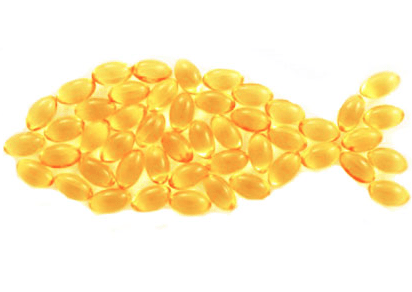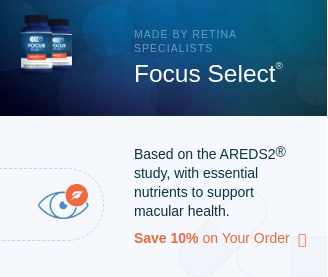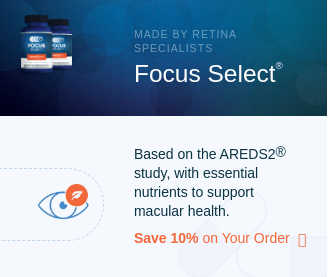Macular Degeneration
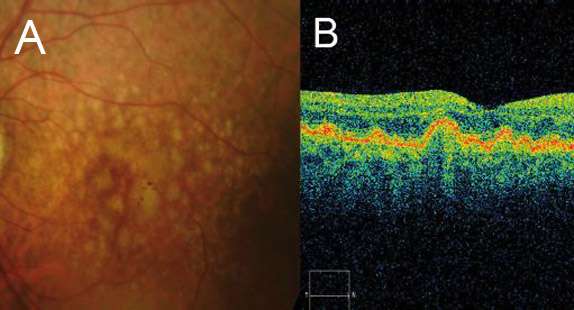
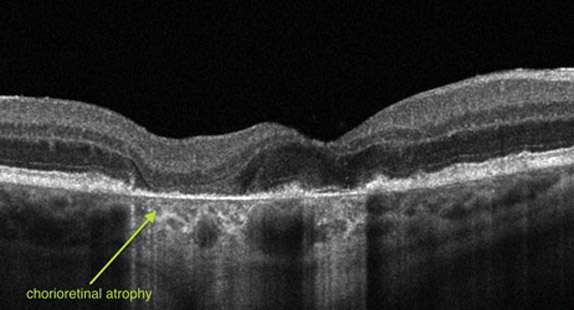
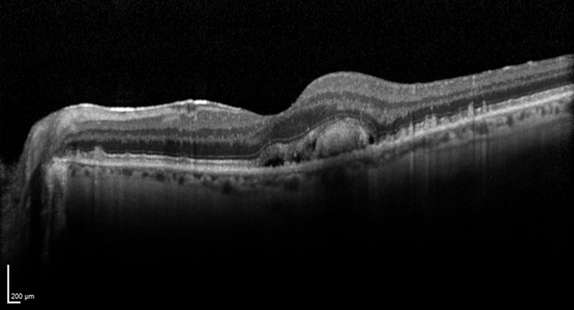
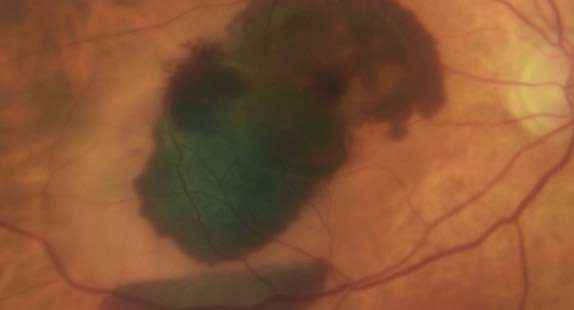
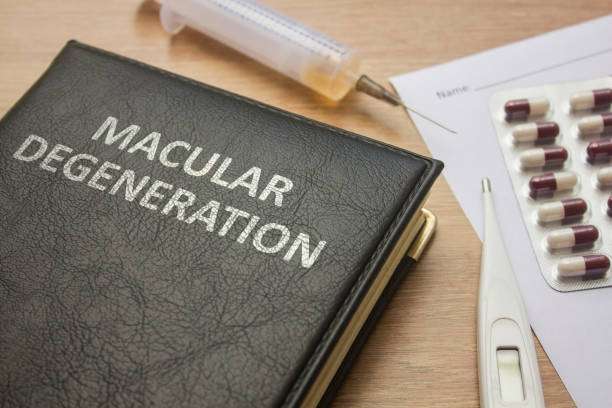
Age-Related Macular Degeneration (AMD)
As AMD progresses, a blurred area near the center of vision is a common symptom. Over time, the blurred area may grow larger or you may develop blank spots in your central vision. Objects also may not appear to be as bright as they used to be. AMD by itself does not lead to “black” blindness, with no ability to see.
However, the loss of central vision in AMD can interfere with simple everyday activities, such as the ability to see faces, drive, read, write, or do close work, such as cooking or fixing things around the house.
Dry Age-RelatedMacular Degeneration
Who Is At Risk?
Age is the major risk factor for AMD. The disease is most likely to occur after age 60, but it can occur earlier. Other risk factors for AMD include:
Smoking– Studies have shown that smoking can double your risk of developing AMD.
Race– AMD is more common among Caucasians than among African-Americans or Hispanics/Latinos.
Family– history and Genetics. People with a family history of AMD are at higher.
What Is Age-Related Macular Degeneration(AMD)?
AMD is a common eye condition and a leading cause of vision loss among people age 50 and older. It causes damage to the macula, a tiny area near the center of the retina and the part of the eye responsible for sharp, central vision, which is straight ahead. In some people, AMD advances so slowly that vision loss does not occur for a long time. In others, the disease progresses quickly and may lead to a loss of vision in one or both eyes. As AMD progresses, a blurred area near the center of vision is a common symptom. Over time, the blurred area may grow larger or you may develop blank spots in your central vision.
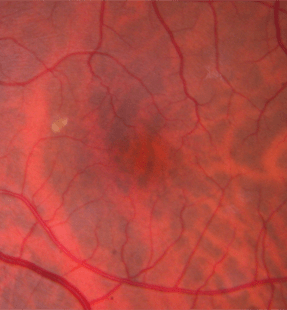
EARLY AMD
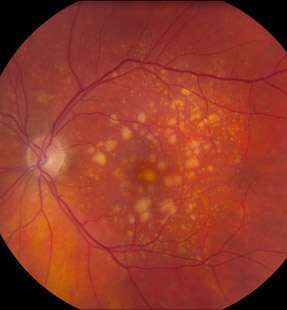
INTERMEDIATE AMD
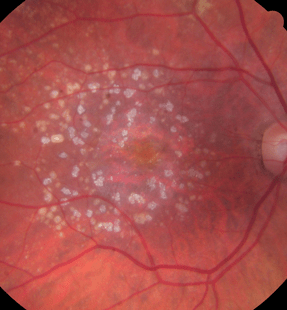
LATE AMD
DR. DESAI’S RECOMMENDATIONS
For patients with DRY AMD, first and foremost it is recommended to check the vision out of each eye daily to monitor for any major changes in your vision. This can be done using an Amsler grid. Changes in your central vision may cause the lines in the grid to disappear or appear wavy, a sign of AMD. If you begin to notice changes, it is recommended to see Dr. Desai for a comprehensive dilated exam which could include testing such as OCT and Fluorescein angiogram. It is also recommended to quit smoking and avoid second hand smoke, maintain a healthy diet, including leafy green vegetables, and use of sunglasses when outside. In addition, patients with DRY AMD may benefits from a specific mixtures of eye vitamins collectively called AREDS 2 vitamins (Age-Related Eye Disease Study 2 Vitamins).
WET AGE-RELATED MACULAR DEGENERATION
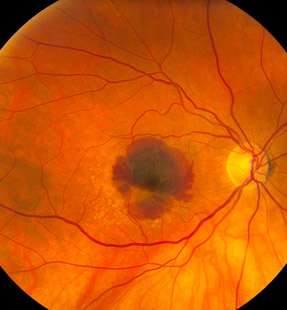
WET AMD
In neovascular AMD, also called WET AMD, abnormal blood vessels grow underneath the retina. These vessels can leak fluid and blood, which may lead to swelling and damage of the macula. The damage may be rapid and severe, unlike the more gradual course of Dry AMD. It is possible to have both DRY and WET AMD in the same eye, and either condition can appear first.
HOW WET AMD IS TREATED
The therapies described below are not a cure but are primarily utilized to stop or slow down further vision loss. The condition may progress even with treatment.
INJECTIONS (ANTI-VEGF)
With neovascular AMD, abnormally high levels of vascular endothelial growth factor (VEGF) are secreted in your eyes. VEGF is a protein that promotes the growth of new abnormal blood vessels. Anti-VEGF injection therapy blocks this growth. If you get this treatment, you may need multiple monthly injections. Before each injection, your eye will be numbed and cleaned with antiseptics.
PHOTODYNAMIC THERAPY
This technique involves laser treatment of select areas of the retina. First, a drug called verteporfin will be injected into a vein in your arm. The drug travels through the blood vessels in your body, and is absorbed by new, growing blood vessels. Your eye care professional then shines a laser beam into your eye to activate the drug in the new abnormal blood vessels, while sparing normal ones. Once activated, the drug closes off the new blood vessels, slows their growth, and slows the rate of vision loss. This procedure is less common than anti-VEGF injections, and is often used in combination with them for specific types of neovascular AMD.
Currently, no treatment exists for early AMD, which in many people shows no symptoms or loss of vision. Your eye care professional may recommend that you get a comprehensive dilated eye exam at least once a year. The exam will help determine if your condition is advancing. As for prevention, AMD occurs less often in people who exercise, avoid smoking, and eat nutritious foods including green leafy vegetables and fish. If you already have AMD, adopting some of these habits may help you keep your vision longer.
If you have intermediate or late AMD, you might benefit from taking AREDS 2 vitamins. But first, be sure to review and compare the labels. Many supplements have different ingredients, or different doses, from those tested in the AREDS trials. Also, consult your doctor or eye care professional about which supplement, if any, is right for you. For example, if you smoke regularly, or used to, your doctor may recommend that you avoid supplements containing beta- carotene.
- 500 milligrams (mg) of vitamin C
- 400 international units of vitamin E
- 80 mg zinc as zinc oxide
- 2 mg copper as cupric oxide
- 10 mg lutein and 2 mg zeaxanthin
Even if you take a daily multivitamin, you should consider taking an AREDS supplement if you are at risk for late AMD. The formulations tested in the AREDS trials contain much higher doses of vitamins and minerals than what is found in multivitamins. Tell your doctor or eye care professional about any multivitamins you are taking when you are discussing possible AREDS formulations.
Finally, remember that the AREDS formulation is not a cure. It does not help people with early AMD, and will not restore vision already lost from AMD. But it may delay the onset of late AMD.
It also may help slow vision loss in people who already have late AMD.
DR. DESAI’S SUPPLEMENT RECOMMENDATIONS
Dr. Desai recommends making sure that your eye vitamin packaging states “AREDS 2” on them, however, he recommends FOCUS Vitamins to his patients for their high quality ingredients and convenience of having them delivered to your door. The capsules are small, however, they also come in chewable tablets. If it is difficult for you to swallow pills. Click on the link to place your order, you can also ask Dr. Desai about the eye vitamins during your office visit.

